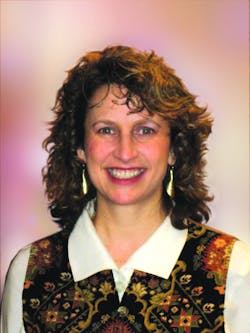Making bio-optics serve its greatest potential

An undercurrent of maximizing discovery—that is, bringing biophotonics to market—was palpable at the Optical Society's (OSA) 2012 Biomedical Optics and 3-D Imaging Congress (April 28–May 2). The theme was evident throughout the plenary sessions, and cumulated in a "rump session" titled Opportunities for Photonics Companies in Healthcare. The lively 2-hour session—organized by the Optoelectronic Industry Development Association (OIDA), which has recently become part of the OSA, and sponsored by Hamamatsu—began with short presentations by seven speakers representing large and small commercial organizations, academe, and government.
Robert Nordstrom of the National Institutes of Health noted that a key ingredient in the breakdown that typically happens in the attempt to transition technology from academia to industry is the fact that the two sides "aren't speaking the same language," focused as they are on completely different priorities. Nordstrom said that the National Cancer Institute (NCI) offers a couple of funding programs designed to address this "malaise" by requiring academe and industry to collaborate in order to receive funding: The Academic-Industrial Partnership program PAR-10-169 and the Network for Translational Research.
Other presenters focused on the growth of optical technologies in certain market sectors and applications. For instance James Brennan of Exponent Engineering discussed optical coherence tomography (OCT) for cardiovascular applications, and said that the technology has overcome challenges related to imaging through blood, and is "really starting to eat the lunch of IVUS"—that is, intravascular ultrasound, the standard bearer for intracoronary imaging. Joe Izatt of Duke University and OCT instrument developer Bioptigen quoted the OCT News report that the technology has reached $1 billion/year, and pointed to big opportunity in imaging the anterior parts of the eye, as well as for intrasurgical guidance. James Mansfield of PerkinElmer sees growth opportunity for optical technologies to aid pathology with quantitative data. Yonji Fu of Becton Dickinson gave examples of personal care product opportunities—and their implementation challenges.
But the session concluded by returning to the friction point between academe and industry-exploring practical matters such as patent strategies. Brennan sounded a positive note by saying that many venture capital (VC) funds are looking for opportunity, but Mansfield added that market intelligence is key, since VCs are comfortable with technology risk, but not market risk.
Clearly, NCI's academia/industry initiatives are a step in the right direction for helping commercialization efforts succeed.
About the Author

Barbara Gefvert
Editor-in-Chief, BioOptics World (2008-2020)
Barbara G. Gefvert has been a science and technology editor and writer since 1987, and served as editor in chief on multiple publications, including Sensors magazine for nearly a decade.